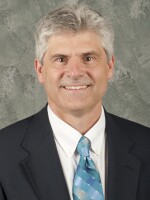Many in the Northwoods do not have access to high speed broadband internet. That’s a critical gap in modern living, especially with the health emergency keeping people at home. State grants through the Public Service Commission have recently been awarded to some communities and counties to help remedy the situation.
According to Forest County Broadband Commission Chair Mark Ferris, “Broadband today is much like electricity a hundred years ago. We consider it a utility. It is critical to the operation of any business and of course it is critical for families and their children to be able to connect.”
Ferris led the effort in Forest County that recently secured one of the largest state grants from the Wisconsin Broadband Office, a Division of the Public Service Commission. As of 2019, the Federal Communication Commission reports that nearly 28 percent of residents in rural Wisconsin lack access to broadband highspeed internet, defined as download speeds of at least 25 megahertz per second, while urban areas have nearly 100 percent access. The Wisconsin Broadband Office is dedicated to closing the digital divide between urban and rural Wisconsin.
State Broadband Director Jaron McCallum explains why broadband highspeed internet is so important in today’s society.
“I think it really comes down to competing in today’s modern economy. So many things that we do on a daily basis are online or required to be done online, whether it is applying for a job or renewing your license plates,” McCallum said.
The COVID-19 pandemic has also exposed the problems created in homes that lack access to high speed internet. Students are expected to learn from home and communicate with their instructors, parents are working remotely, and there has been an increase in online shopping. These activities need high speed internet.
McCallum adds that there “is just endless applications with broadband connectivity. As a whole I really think that a community with good broadband connectivity is a vital community. Great connectivity can really boost a community’s ability to compete in today’s modern economy.”
In late March, McCallum’s office awarded $24 million in grants to communities. Successful grant proposals in the Northwoods came from Forest, Vilas, Oneida, and Oconto counties. Forest County received one of the largest grants, which will permit them to build 17 towers in collaboration with Northwoods Connect. Besides the obvious benefits to education, emergency services, and the ability to do e-commerce and e-medical visits with high speed internet, Ferris describes some of the economic benefits as well.
“The number one piece that people are looking for when they choose a place of residence or a place of business is utility infrastructure and broadband is right at the top of that list,” he said.
According to Ferris, recent surveys show that seasonal homeowners would also extend their stays if they had access to high speed internet. He also notes that accessible broadband internet sends a positive message to potential new businesses and existing businesses as well.
By the end of two years, Forest County expects its residents to have over 90 percent connectivity. This will take Forest County from one of the least connected to one of the most connected counties in the Northwoods.
According to information provided by the Public Service Commission, there are other counties that lack sufficient connectivity. For example, Langlade, Lincoln, and Iron Counties have significant regions without access to high speed internet. Even the eastern and western ends of Oneida County and the western end of Marathon County lack adequate internet access. The good news is that the WBO will be awarding another round of grants for the coming year.
“Through a lot of those funding mechanisms I think we can make significant progress towards our goal of connecting everyone in the state,” McCallum said.
To attain that goal, he notes that local leaders must request the funds.
“It does require some level of local involvement and local initiative. Sometimes what is takes is a local champion to help drive that grant application along with partnerships with ISPs or other entities.”
McCallum or other members of his office, however, are there to help. They offer grant writing workshops, webinars and other forms of consultation so that local groups can prepare the best proposal.
The goal is to get all Wisconsin residents access to highspeed internet in the near future. As Ferris notes, it should be available to everyone as it has become “a necessity of life.”





